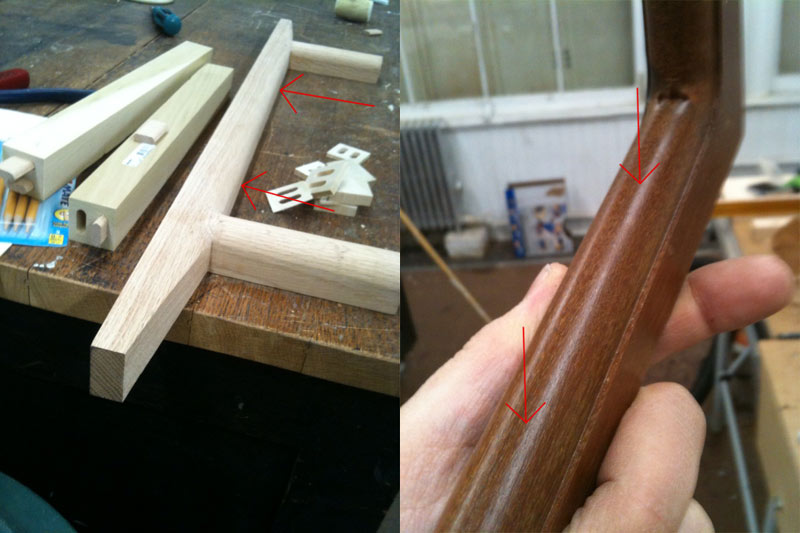
I am trying to figure out the best way to drill clean, centered, countersunk holes in rounded material.
The above picture shows a leg of a cabinet base (left) and small teak shelf support (right), both of which have been rounded-over with an OF 1400. I see now I could have tackled the holes prior to shaping the edges. However the bearing on my roundover bit might have sunken into the drill holes and caused a dip in the profile.
Either way, I'm now faced with the task of boring roughly 30 holes, the base supports are 6/4 oak, the brackets are 3/4 teak. The oak will accept round head bolts, the teak will accept countersunk brass screws which go through the wood and into wall mounted anchors. I don't have a drill press, and so far my tests on scrap with a General Accu-Drill Precision Drill Guide have been horrendous failures full of tearout.
What countersink bits do you festoolers recommend, and can I get these holes done using my 1400 creatively, or do I have to bite the bullet and spring for a drill press?
